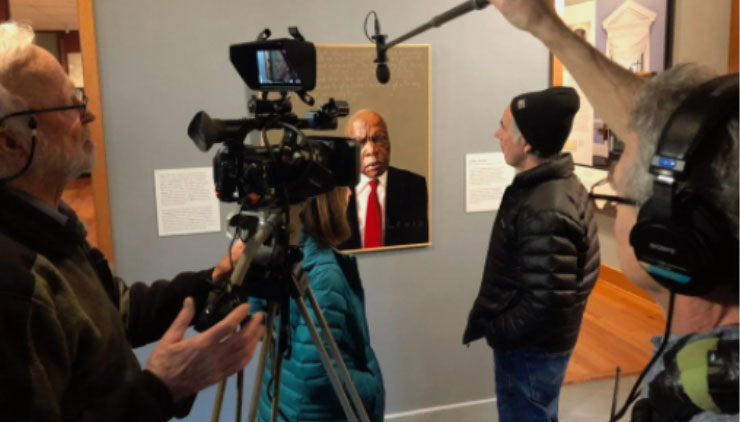
Jeannette Rankin
Suffragette, Congresswoman, Pacifist : 1880 - 1973
“Women remind me of the cows on our ranch in Montana. A cow has a calf and after a while a man comes along and takes the calf away. She bawls for a while, then goes on and has another calf. If we had 10,000 women willing to go to prison, that would end the war. We’ve had 10,000 women sit back and let their sons be killed.”
Biography
The eldest child of a Montana rancher and a schoolteacher, Jeannette Rankin would cast a vote in Congress for peace before most American women could vote in the rest of the country. After graduating from Montana State University, Rankin taught school, designed furniture, and dabbled in social work. Then women’s suffrage movement ignited her passion, and she became legislative secretary of the National American Woman Suffrage Association. Her efforts led to women in Montana winning the right to vote in 1914, five years before the Nineteenth Amendment guaranteed that right nationally.
In 1916, Rankin was elected to the US Congress as a Republican. Just four days into her term, she drew national attention by voting–together with fifty-five men–against the US entry into World War I. “I want to stand with my country, but I cannot vote for war,” she said. She later voted for suffrage, civil liberties, equal pay, and child welfare, but her anti-war vote kept her from being reelected in 1920.
Working for peace became Rankin’s life work. “There can be no compromise with war,” she wrote. “[I]t cannot be reformed or controlled; cannot be disciplined into decency or codified into common sense, for war is the slaughter of human beings, temporarily regarded as enemies, on as large a scale as possible.” She held leadership roles in the Women’s International League for Peace and Freedom and other groups, and she later traveled to India to learn about non-violence from Gandhi.
In 1940, Rankin ran for Congress on an isolationist platform, and Montana again sent her to Washington. After the attack on Pearl Harbor, she was the only member of Congress to vote against declaring war on Japan. Although editor William Allen White disagreed with her position, he wrote, “Probably a hundred men in Congress would have liked to do what she did. Not one of them had the courage to do it.”
In 1968 and again in 1970, just days before her ninetieth birthday, Rankin went to Washington, DC to lead marches against the Vietnam War.
Programs
Americans Who Tell the Truth (AWTT) offers a variety of ways to engage with its portraits and portrait subjects. Host an exhibit, use our free lesson plans and educational programs, or engage with a member of the AWTT team or portrait subjects.

Education
AWTT has educational materials and lesson plans that ask students to grapple with truth, justice, and freedom.

Exhibits & Community Engagement
AWTT encourages community engagement programs and exhibits accompanied by public events that stimulate dialogue around citizenship, education, and activism.